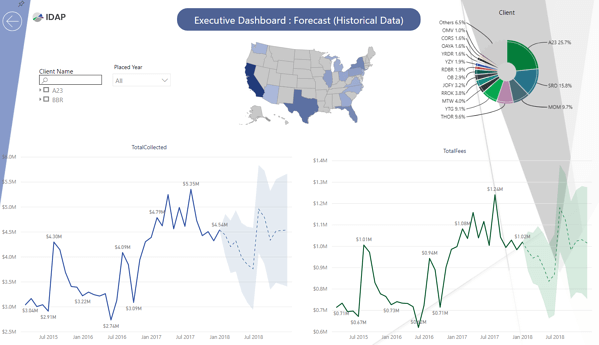Increase Collections with Effective Data Inventory Management
- November 29, 2018
- Category: Business Intelligence

Data analytics is a hot topic in business nowadays. Most organizations regularly capture data analytics to improve business operations. When historical data is assessed properly, we begin to understand where the business is going. But, how can we be certain our data assessments are effective?
From our experience working with debt collection businesses, 80-85% of law firms alone do not have an effective production and inventory management viewing system. This inefficiency leads to a myriad of setbacks. Data must be tracked judiciously and should focus on areas of the business that have the highest impact. Here are three surefire ways to ensure actionable data insights by maximizing data effectiveness.

1. Segment into Categories
Since there is an endless supply of data metrics, inventory management can become overwhelming. Segmentation allows inventory to be separated into more manageable buckets and can be analyzed at a granular level. After digging deeper into the data, insights are uncovered that benefit production. If the trends are analyzed properly, the data will show everything from current performance to impending outlook, enabling the business to avoid repeat mistakes.
Assess which categories are the most impactful to the business. Some of the more effective segmented categories that we have found are structured by client, state, and paper type. Based on the volume in each category, further segment by scoring, balance, and asset availability.
2. Derive Meaningful Insights
Apply meaningful insights to the segmented data. This step is a crucial part of the process – without it, opportunities are missed. By creating a focused view of each category, potential bottlenecks and other roadblocks are identified, reducing the amount of time it takes to collect a debt.
Meaningful insights can be identified such as trends within debt payments. We have observed clients derive insights and identify a certain group of accounts that are more inclined to pay off debts than others.
3. Identify the Important Parameters
In order to maximize production and staff, it is vital to measure data according to predetermined parameters. These parameters should outline the specific attributes that will most likely affect data. Some of the important parameters to measure are account balance, state or age group.
With a successful inventory management system, collection agents gain insights into their performance, leading to an overall improvement of production efficiency by 20-30%. Not only can a proper inventory management system help maximize resource utilization, but it can also help to avoid compliance risk. Firms and agencies can review a collector’s performance and provide coaching feedback in order to align with regulatory standards. This boost in production encourages a sense of ownership among the agents, and ultimately, an increase in collections.







